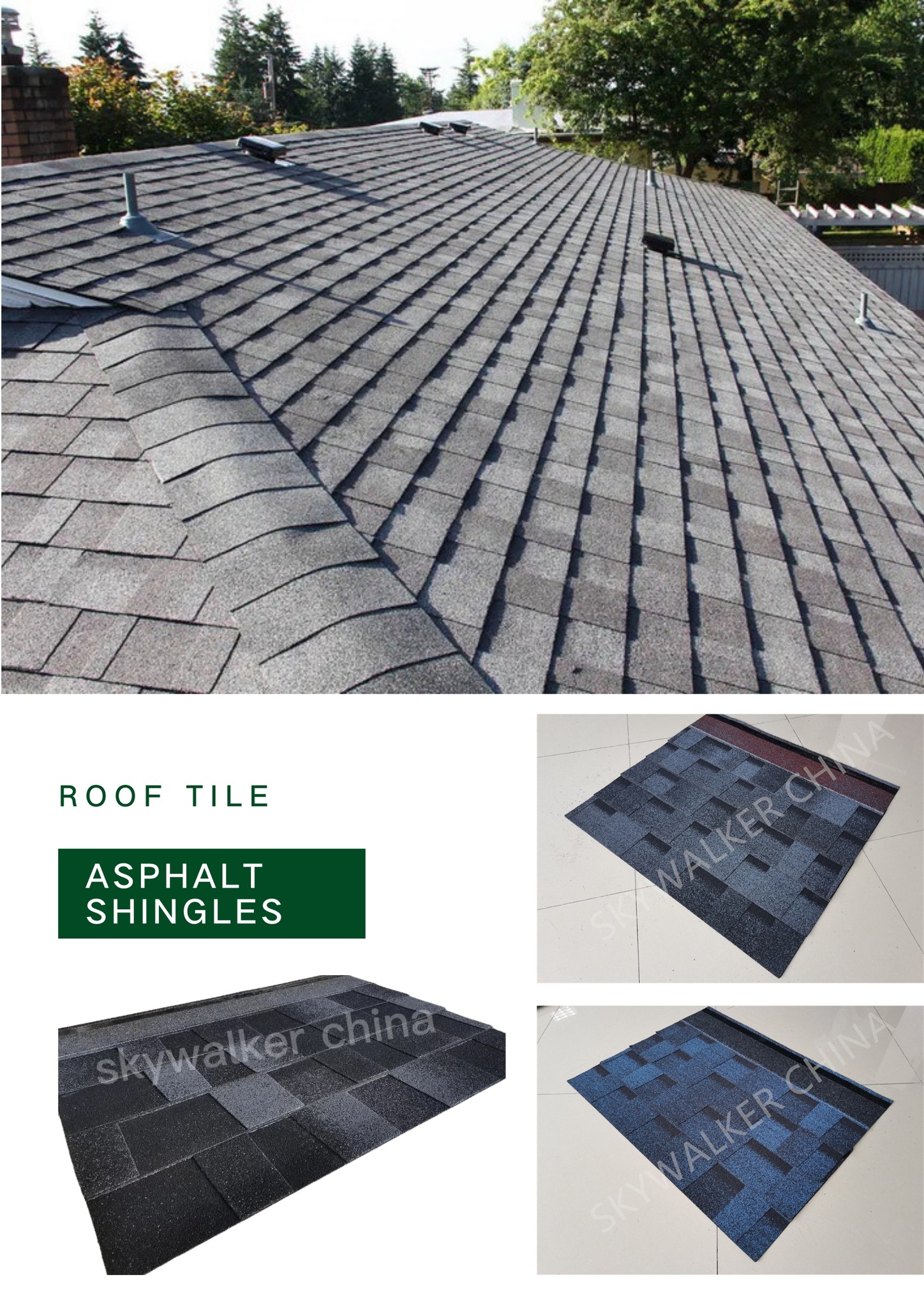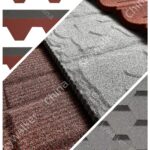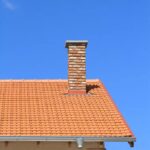As a homeowner, it is crucial to understand the importance of maintaining your asphalt shingle roof. With proper care and regular maintenance, you can extend the lifespan of your roof, prevent costly repairs, and ensure the protection of your home. In this comprehensive guide, we will explore the essential steps and best practices for maintaining asphalt shingle roofs.
What Are Asphalt Roofing Shingles?
Before diving into the maintenance tips, let’s briefly discuss what asphalt roofing shingles are. Asphalt shingles are the most popular residential roofing material in the United States. They are made up of a fiberglass or cellulose mat, asphalt, and mineral granules. These shingles are installed in overlapping rows to create a waterproof barrier for your home.
There are three main types of asphalt shingles that SKWRoof provides: Laminated Roofing Shingles, 3-Tab/Single Layer Roofing Shingles, and Mosaic Roofing Shingles. Each type offers distinct characteristics, including durability, lifespan, and aesthetic appeal.
Laminated Roofing Shingles
Laminated Roofing Shingles, also known as architectural or dimensional shingles, feature a layered and textured appearance. These shingles are thicker and more durable than standard 3-Tab shingles, boasting a lifespan of 18 to 20 years. With a variety of colors available, Laminated Roofing Shingles provide both durability and aesthetic appeal, making them a popular choice among homeowners.
3-Tab/Single Layer Roofing Shingles
3-Tab/Single Layer Roofing Shingles are a cost-effective option with a uniform flat appearance. Comprising an outer layer of asphalt, adhesives, and granules with a fiberglass backing, these shingles are an economical choice. While they have a shorter lifespan of around 7 to 15 years, they remain a reliable option for those seeking affordability and functionality.
Mosaic Roofing Shingles
Mosaic Roofing Shingles replicate the luxurious look of materials such as clay or slate tiles. As a premium option among asphalt shingles, Mosaic Roofing Shingles offer superior weather resistance and can last up to 30 years. Adding an elegant and sophisticated touch to any home, these shingles combine aesthetic appeal with long-lasting performance.
The Importance of Roof Maintenance
Maintaining your asphalt shingle roof is crucial for several reasons. First, regular maintenance helps identify and address minor issues before they escalate into major problems. By catching and repairing small damages early on, you can save money and prevent the need for a full roof replacement.
Second, a well-maintained roof enhances the comfort and durability of your home. A structurally sound roof protects your family and your property from the elements, ensuring a safe and secure living environment. Additionally, a well-maintained roof contributes to the overall value of your home.
Lastly, many insurance companies expect homeowners to maintain their roofs. Neglecting roof maintenance can result in insurance companies requiring roof replacements or even rescinding coverage. By proactively maintaining your asphalt shingle roof, you can keep your insurance coverage intact.
The 8 Essential Steps for Asphalt Shingle Roof Maintenance
Step 1: Regular Roof Inspections
Regular roof inspections are vital for identifying any issues or potential problems with your asphalt shingle roof. It is recommended to have a professional roofing contractor perform biannual inspections, preferably in the spring and fall. During the inspection, the contractor will check for signs of cracking, fading, staining, or buildup on the shingles. They will also assess the integrity of the flashing, vents, and other roof components.
While professional inspections are crucial, homeowners can also perform their own visual inspections. Look for any obvious signs of damage, such as missing or damaged shingles, and note any areas that require further attention. Regular inspections can save you money in the long run by addressing small issues before they turn into costly repairs.
Step 2: Clearing Gutters and Downspouts
Maintaining clean and functional gutters and downspouts is essential for the health of your asphalt shingle roof. Clogged gutters can lead to water overflow, which can seep under the shingles and cause damage to the roof structure. To prevent this, regularly clear out any leaves, sticks, or debris from the gutters and downspouts. This will ensure proper water flow and prevent water from pooling on your roof.
Consider installing gutter guards to keep debris out and minimize the need for frequent cleaning. Additionally, check that all gutters, downspouts, and soffits are firmly attached and level to avoid any potential damage or water leakage.
Step 3: Trimming Tree Branches and Removing Debris
Overhanging tree branches can cause significant damage to your asphalt shingle roof, especially during severe weather conditions. Trim any branches that hang too close to your roof or pose a potential threat. It is also important to regularly remove any organic debris, such as leaves and twigs, from your roof surface. Debris can trap moisture and lead to the growth of mold, moss, or algae, which can degrade the shingles and compromise the roof’s integrity.
To remove debris, use a leaf blower or carefully sweep the roof surface, ensuring not to damage the shingles. Always blow or sweep the debris away from the roof, as blowing or sweeping towards the shingles can lift and damage them.
Step 4: Seal Flashing and Check for Leaks
Flashing plays a critical role in keeping your asphalt shingle roof watertight. It is essential to regularly inspect the flashing around chimneys, vents, and other roof penetrations for any signs of damage or deterioration. Cracked, rusted, or loose flashing can allow water to seep into your home, leading to leaks and water damage.
As part of your maintenance routine, seal any gaps or cracks in the flashing with a waterproof sealant. This will help maintain the integrity of the flashing and prevent water infiltration. If you notice any signs of leaks, such as water stains on your ceilings or walls, address the issue promptly by contacting a professional roofing contractor.
Step 5: Monitor and Treat Moss, Lichen, and Algae Growth
Moss, lichen, and algae growth can significantly impact the lifespan and performance of your asphalt shingle roof. These organisms thrive in moist and shaded areas, leading to the deterioration of the shingles. Regularly monitor your roof for any signs of moss, lichen, or algae growth.
To treat moss and similar growths, you have several options. Hiring a professional roof cleaning company is one option, as they have the expertise and tools to safely remove the growth without causing damage to the shingles. Alternatively, you can use a light spray and cleaning solution to remove the moss yourself. To prevent future growth, consider applying a biennial application of zinc sulfate powder on your roof, particularly in areas prone to moisture.
Step 6: Clean Dirt, Algae, and Stains
Over time, dirt, algae, and stains can accumulate on your asphalt shingle roof, affecting its appearance and performance. Regular cleaning can help maintain the aesthetic appeal of your roof and prevent potential damage. Use a low-pressure cleaning method and a mild cleaning solution to remove dirt, algae, and stains from the shingles.
When cleaning your roof, always follow proper safety guidelines and use caution to avoid damaging the shingles. Consider using a professional roof cleaning service if you are unsure or uncomfortable with cleaning the roof yourself.
Step 7: Ensure Proper Attic Insulation and Ventilation
Proper attic insulation and ventilation are essential for maintaining the health and longevity of your asphalt shingle roof. Inadequate insulation and ventilation can lead to the formation of ice dams, moisture buildup, and excessive heat in the attic, all of which can damage the shingles.
Regularly inspect your attic to ensure proper insulation is in place and that there are no obstructions blocking the ventilation vents. If needed, consult with a professional to improve insulation and ventilation in your attic. This will help regulate the temperature and moisture levels, preventing damage to your roof.
Step 8: Address Repairs Promptly
If you notice any signs of damage or deterioration during your roof inspections or cleaning, it is crucial to address repairs promptly. Delaying repairs can lead to further damage and compromise the integrity of your asphalt shingle roof.
Common roof repairs include replacing damaged or missing shingles, repairing flashing, and fixing leaks. It is recommended to hire a professional roofing contractor to handle repairs, as they have the expertise and experience to ensure proper repairs and prevent further damage.
Step 9: Understand Your Roof Warranty
Asphalt shingle roofs often come with warranties that cover certain defects or issues. It is important to familiarize yourself with the details of your asphalt shingle roof warranty, including its duration, coverage, and any maintenance requirements.
Some warranties may require regular maintenance, such as annual inspections or cleaning, to remain valid. Adhering to the maintenance requirements outlined in your warranty will help protect your investment and ensure that you can take advantage of any applicable warranty coverage if needed.
Step 10: Consult with Professionals When Needed
While some aspects of asphalt shingle roof maintenance can be done by homeowners, there are certain tasks that are best left to professionals. When in doubt or if you encounter complex issues, it is advisable to consult with a professional roofing contractor.
Professional roofers have the knowledge, skills, and tools to handle roof inspections, repairs, and maintenance tasks effectively and safely. They can provide expert advice, identify potential problems, and ensure that your asphalt shingle roof receives the care it needs.
Conclusion
Maintaining your asphalt shingle roof is a crucial responsibility as a homeowner. By following the steps outlined in this comprehensive guide, you can extend the lifespan of your roof, prevent costly repairs, and ensure the protection of your home. Regular inspections, cleaning, and addressing repairs promptly are key to keeping your asphalt shingle roof in optimal condition. Remember to consult with professionals when needed and adhere to any warranty maintenance requirements. With proper care and maintenance, your asphalt shingle roof will continue to provide the protection and durability your home deserves.
Additional Information
- Remember to use caution and follow safety guidelines when performing roof maintenance.
- Always consult with a professional roofing contractor for complex or extensive repairs.
- Check your asphalt shingle roof warranty for specific maintenance requirements to maintain coverage.
For additional insights and valuable information on asphalt shingles, you can refer to our previous articles—The Ultimate Guide to Asphalt Shingles: Types, Benefits, and Installation and Laminated Asphalt Shingles Residential Housing. These articles delve deeper into the nuances of asphalt shingles, providing a comprehensive understanding of their types, benefits, and maintenance requirements. Our commitment to delivering quality content and expertise extends beyond this guide.
For any inquiries or assistance regarding roofing issues, feel free to reach out to us at SKWRoof. We are committed to providing free consultations and offering top-notch services and products to ensure the well-being of your roof. Your satisfaction and the longevity of your roof are our priorities. Don’t hesitate to contact us anytime for expert advice and support.




